Punctuation Teaching Resources
Teach students how to use punctuation marks in their writing this school year with printable worksheets, fun writing games, instructional slide decks and more primary school teaching resources designed to help extend and help students learn how to punctuate their writing to be more clear and understandable.
Our teacher team has created this extensive collection of teaching resources for teachers like you to teach these important writing tools. Aligned to the Australian curriculum, this grammar collection includes editable worksheets and teaching presentations and more to save you time on lesson planning.
Created by expert teachers, each resource in this punctuation collection has been carefully reviewed and curated by our team. That means it's ready to use in the classroom! You'll even find editable resources, plus differentiated options.
New to teaching this part of the curriculum, or just looking for fresh ways to engage your students? Read on for a primer from our teaching team, including some answers to tricky punctuation questions from kids!
What Is Punctuation? A Kid-Friendly Definition
Teaching punctuation may matter now more than ever as texting and other digital forms of communication become ever more common. So here's a way to explain what punctuation means to your students in a kid-friendly manner with a definition from our teacher team.
Punctuation is a set of marks we use to help make our writing clearer and easier to read.
When we speak, we pause, change our tone of voice or take a breath. Writing is a lot like that, but instead of the quiet that comes when a speaker pauses, punctuation marks are the tools a writer uses to tell readers when to pause.
What Are Punctuation Marks? A Kid-Friendly Definition
The symbols we use for punctuation are called punctuation marks, and there are more than a dozen different ones in English.
Each of these marks or symbols has its own name and important use in writing, but primary students only learn about 14 to 16 as they embark on their early writing adventures.
10 Common Punctuation Marks And How to Use Them Correctly
Let's take a look at some examples of common punctuation marks that students can use in their writing, along with some examples of how they can be used!
Full stop (.)
Sometimes called a period, a full stop looks like a little dot. We use this punctuation mark to end a sentence that is a statement or a command.
- Example: 'My favourite food is pizza.'
Question Mark (?)
The question mark looks like a full stop with a squiggly line on top of it. We use a question mark to end a sentence that is a question.
- Example: 'What is your favourite colour?'

The full stop with a squiggly line on top of it is the symbol for punctuating a question.
Exclamation Point (!)
The exclamation point looks like a full stop with a straight line on top of it. We use an exclamation point to show strong emotion or emphasis.
- Example: 'Our netball team won the game!'

Commas (,)
Commas look like little hooks next to a word in writing. Writers use commas to separate items in a list or to separate clauses in a sentence.
- Examples: 'I need to buy apples, bananas and oranges.' 'After I finish my homework, I will play outside.'
Apostrophe (')
An apostrophe looks like a comma suspended in the air. This symbol can be used in writing to show possession or to shorten a word.
- Example: 'The cat's toy rolled under the table.'
Quotation Mark (')
Quotation marks look just like apostrophes, but they are used differently. This punctuation mark is used to show that someone is speaking or to show the title of a book or movie.
Example: 'I'm hungry,' the girl said to the boy.
Colon (:)
The punctuation mark symbolised by two dots on top of one another is the colon. Writers can use a colon to introduce a list or an explanation.
- Example: 'I need three things for my science experiment: a battery, a wire and a nail.'
Semicolon (;)
The semicolon looks like a comma with a dot on top. This symbol is used to separate two closely related independent clauses.
- Example: 'I like playing soccer; my brother prefers netball.'
Round Brackets ()
Also called parentheses, round brackets are used to set off additional information within a sentence.
- Example: 'My dog (Max) loves to play fetch.'
Hyphen (-)
Represented by a short line, writers use a hyphen to connect two words to make a compound word or to separate syllables at the end of a line.
- Example: 'short-sleeved shirt'
Confusing Punctuation Rules Explained for Kids
Some punctuation rules are straightforward and relatively easy, but others can get complicated — even for the most attentive students. Here are some of the rules that tend to trip up students!
Does Punctuation Go Inside Brackets?
This is a tricky one for students because there is no tried and true answer! The rule comes down to context and the punctuation mark used.
Whether punctuation goes inside or outside parentheses depends on the context and the type of punctuation.
- When Punctuation Goes Inside the Bracket — Commas, full stops and other punctuation marks generally go inside when they are part of the sentence within the parentheses.
- When Punctuation Goes Outside the Bracket — Punctuation marks go outside when they are part of the sentence outside the brackets. For example, when brackets are used at the end of a sentence, the full stop (if there is one) goes outside the brackets.
- Plus Plan
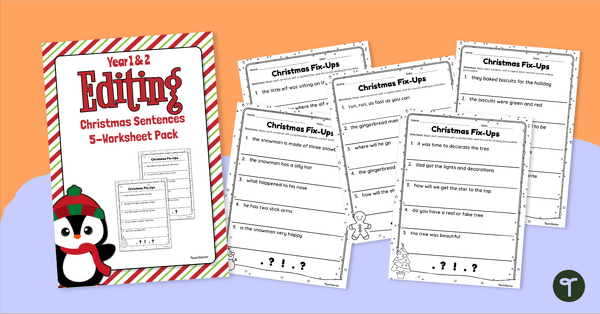
Christmas Editing Worksheets for Year 1
Edit and correct capitalisation and punctuation errors with a set of Christmas Fix the Sentence worksheets for Year 1.
- Plus Plan
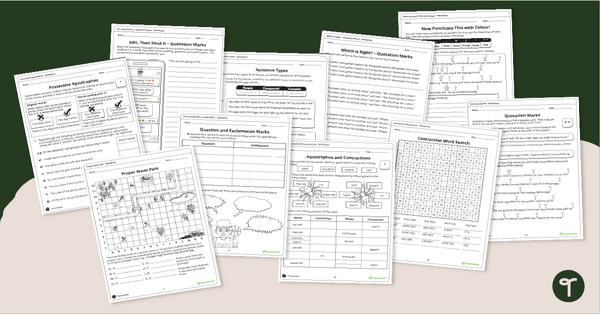
Perfect Punctuation Sheets – Booklet (3-5)
Use our Punctuation activity sheet booklet with 50 punctuation activities to practice a variety of grammar skills in the upper years classroom.
- Plus Plan
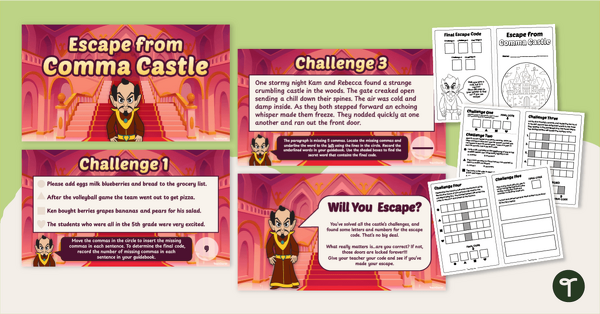
Comma Rules Virtual Escape Room Game (5-6)
Escape from Comma Castle with an exciting Virtual Escape Room Game for Year 5 and 6.
- Plus Plan

Proper Punctuation Chart Pack - Upper Primary
Encourage proper punctuation with a printable punctuation chart pack for upper primary classrooms.
- Free Plan
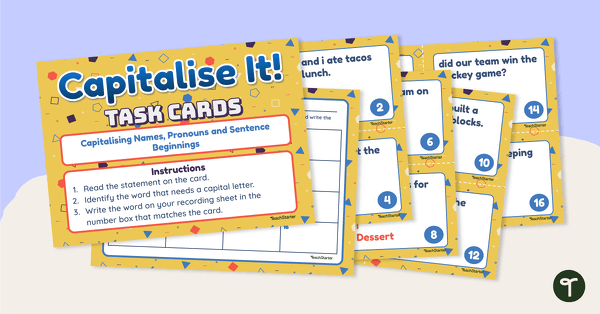
Capitalise It! Task Cards
Reinforce capitalisation of proper nouns, the pronoun ‘I’ and the beginning of sentences with this set of task cards.
- Plus Plan
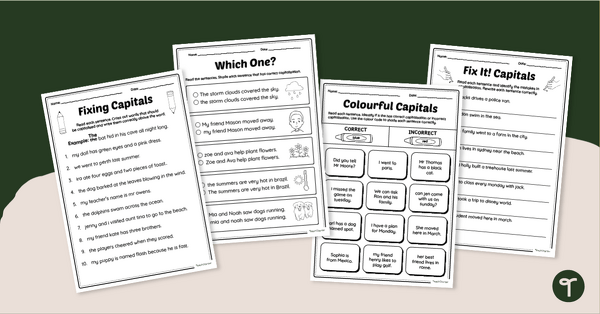
Capitalisation Practice Worksheets
Use printable Capitalization Practice Worksheets to help your beginning writers learn to capitalise words in sentences.
- Plus Plan
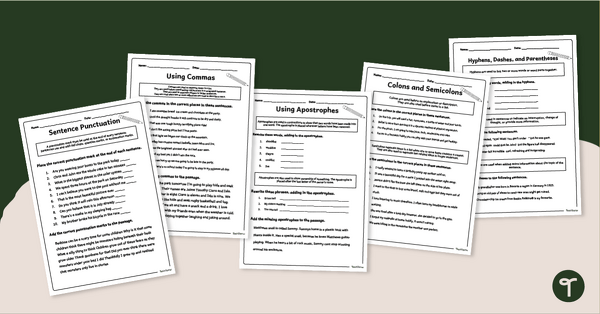
Year 6 Grammar Practice Sheets - Punctuation Concepts
Print and use our Year 6 Grammar Practice Sheets to review a variety of punctuation concepts.
- Plus Plan
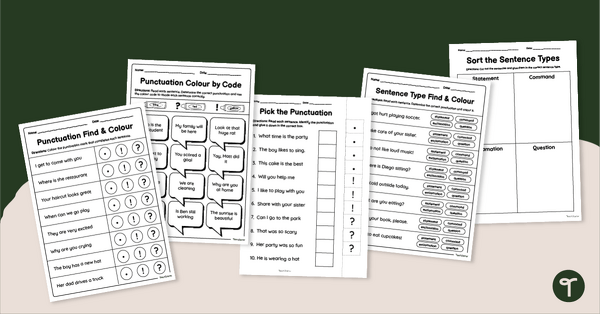
Punctuation & Sentence Types Worksheets (1-2)
Identify the four types of sentences and their punctuation marks with a printable set of Punctuation & Sentence Type Worksheets for Grade 1 and Grade 2.
- Plus Plan

Grammar and Punctuation Assessment Tool – Year 3
A set of 5 grammar and punctuation assessment tools suited to Year 3 students.
- Plus Plan
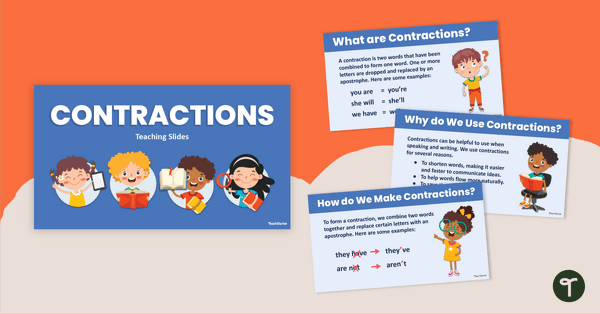
Introduction to Contractions Teaching Slides
Teach students about contractions with this engaging set of teaching slides.
- Free Plan
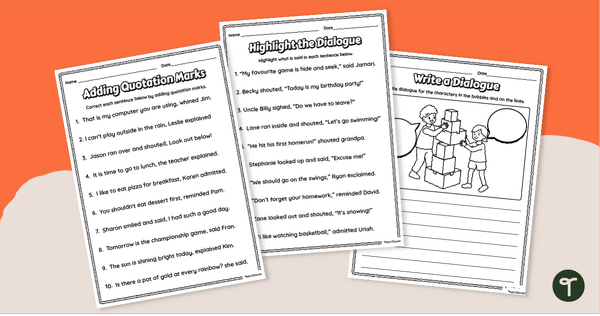
Free Talking Marks Punctuation Worksheets
Download your free Talking Marks Worksheets and give your students additional practice adding quotations to dialogue.
- Plus Plan
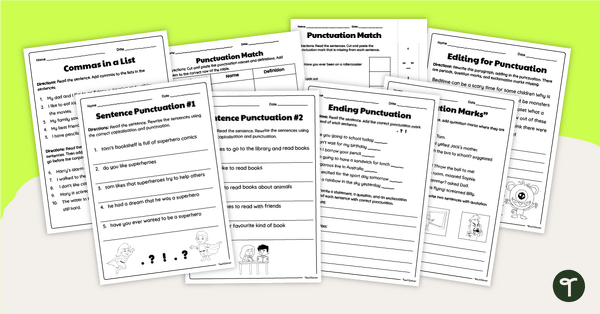
Punctuation Worksheets - Lower Primary
Download our no-prep punctuation worksheets to help your students practice their skills with using a variety of punctuation marks.
- Plus Plan
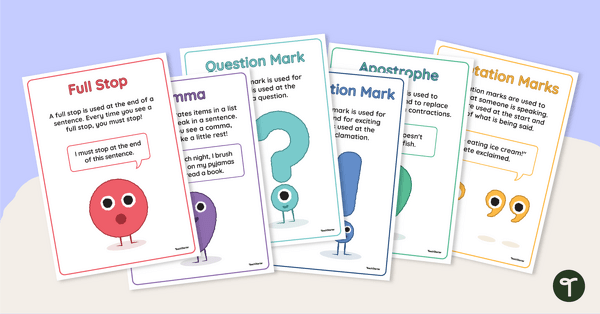
Punctuation Poster Pack
Display this set of 6 punctuation posters in your classroom to remind your students of the most common punctuation marks and their uses.
- Plus Plan
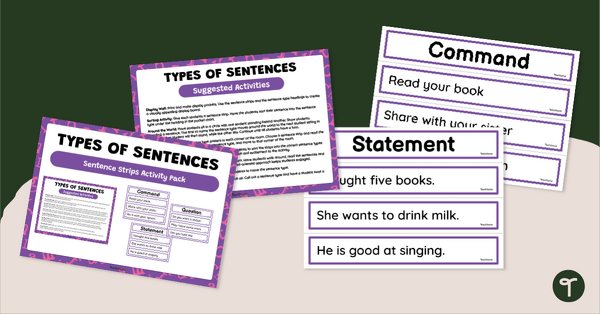
Types of Sentences - Sentence Strips Activity Pack
Use our Sentence Types - Sentence Strip Activity pack to teach your students about statements, commands, questions, and exclamation sentences.
- Plus Plan
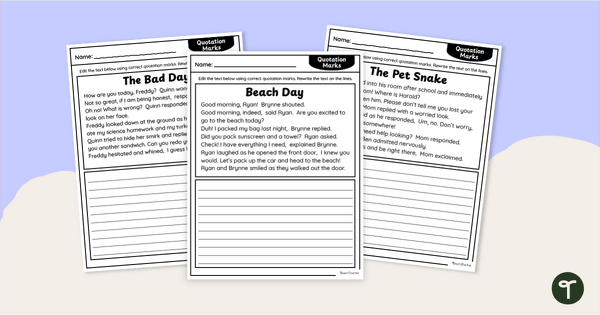
Paragraph Editing - Quotation Marks Worksheets
Practise using quotation marks to signify dialogue in text with a set of printable Paragraph Editing Worksheets.
- Plus Plan
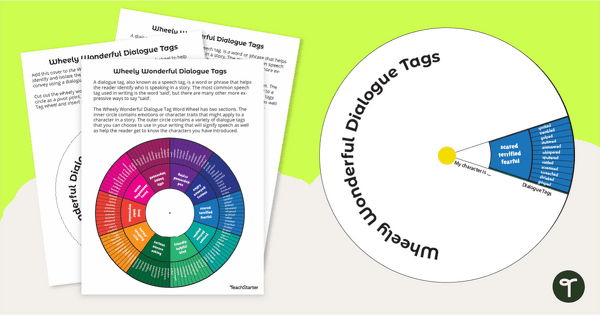
Wheely Wonderful Dialogue Tags Spinner
Spice up your students' writings and help them choose better dialogue tags with a ‘Wheely’ Wonderful Dialogue Tag Spinner.
- Plus Plan
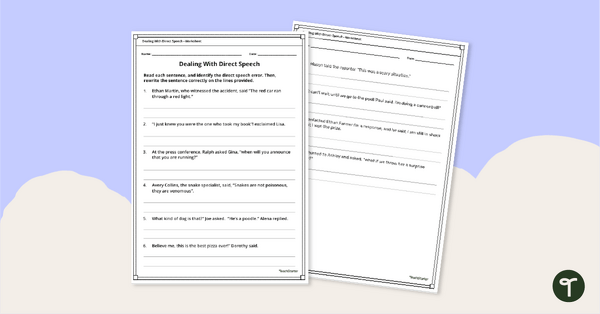
Dealing With Direct Speech - Worksheet
Use this worksheet when teaching students the rules for punctuating direct speech using double quotation marks.
- Plus Plan
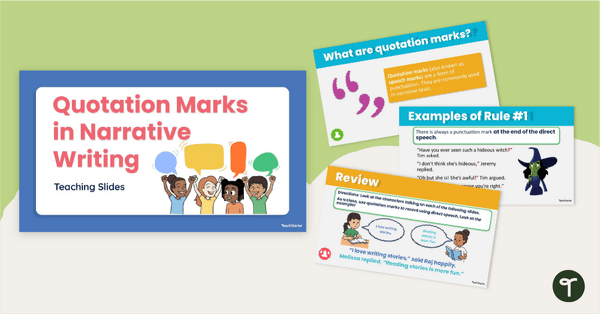
Using Quotation Marks in Narrative Writing PowerPoint
Teach the correct usage of quotation marks in narrative writing with this set of teaching slides.
- Plus Plan
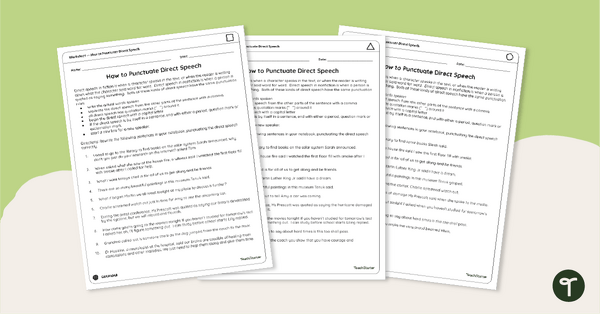
How to Punctuate Dialogue Worksheets
Reinforce understanding of how to punctuate dialogue using double quotation marks with differentiated worksheets.
- Plus Plan
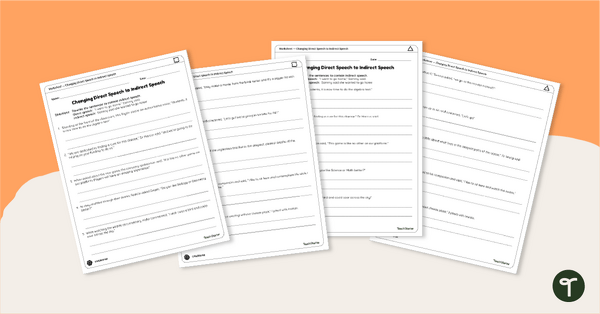
Changing Direct Speech to Indirect Speech – Differentiated Worksheets
Convert direct speech to indirect speech with differentiated quotation mark worksheets.
- Plus Plan
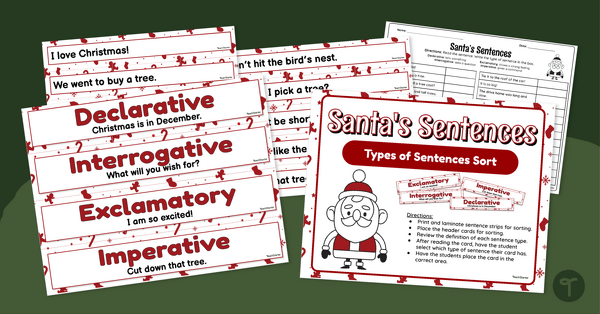
Christmas Activity Printables - Types of Sentences Sort
Help your students identify the four types of sentences with a printable Christmas sorting activity on declarative, interrogative, imperative, and exclamatory sentences.
- Plus Plan
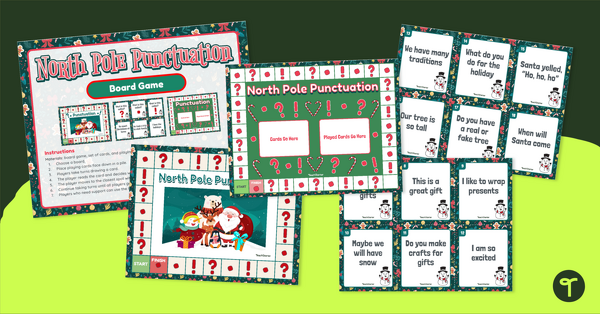
Christmas Board Game - Ending Punctuation
Engage students by having them play a Christmas board game, refining the ability to use correct punctuation at the end of sentences.
- Free Plan

Comma Task Cards
- Plus Plan
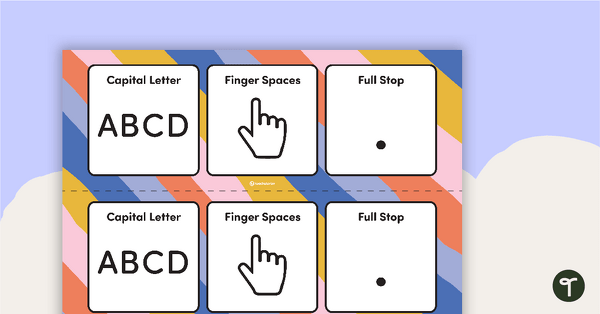
Capital Letter, Finger Space, Full Stop – Desk Plate
A desk plate with helpful cues for beginning writers.
- Free Plan
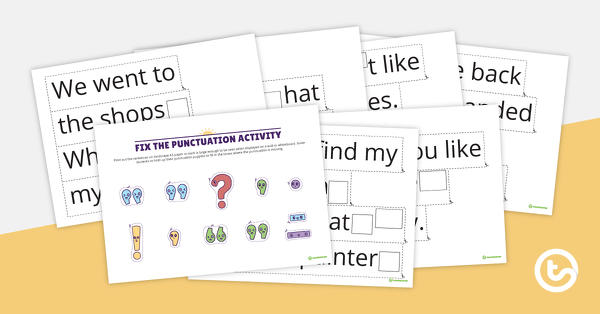
Fix the Punctuation Activity
A cut and match activity to help your students correctly punctuate sentences.
- Plus Plan

Punctuation Tracking Chart – Monster Theme
A classroom display that allows students to see their progress towards using correct grammar and punctuation in their sentences.
- Plus Plan
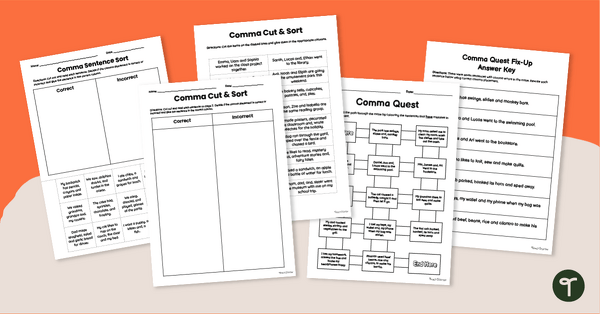
Year 2 Commas in a List Worksheets
Print a Commas in a List Worksheet Year 2 students will love with our printable no-prep Commas in a Series worksheet pack.
- Plus Plan

Grammar Conventions - Year 6 Grammar and Punctuation Test Pack
Assess student knowledge of grammar conventions with a printable Year 6 Grammar and Punctuation Test Pack
- Plus Plan
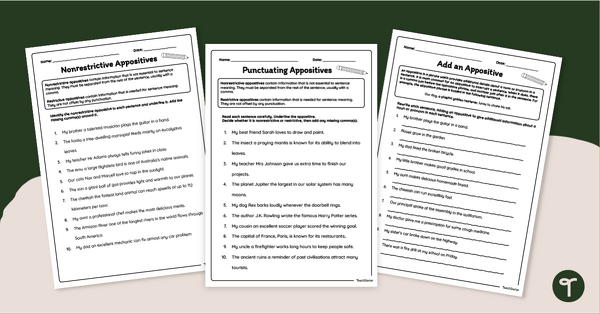
Punctuating Appositives Worksheet Pack
Use this Appositives Worksheet pack to practise using commas to set off restrictive and nonrestrictive appositives.
- Plus Plan
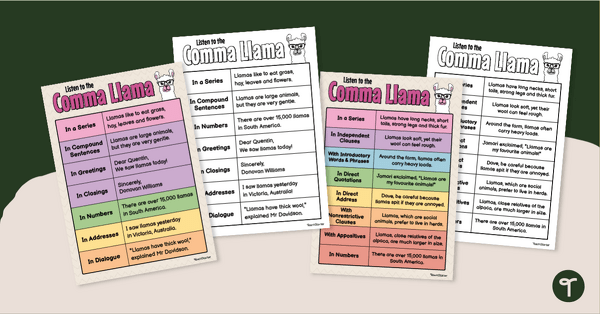
Comma Llama - Using Commas Anchor Chart
Make learning comma rules engaging and memorable with our Comma Llama - Using Commas Anchor Chart pack!
- Plus Plan
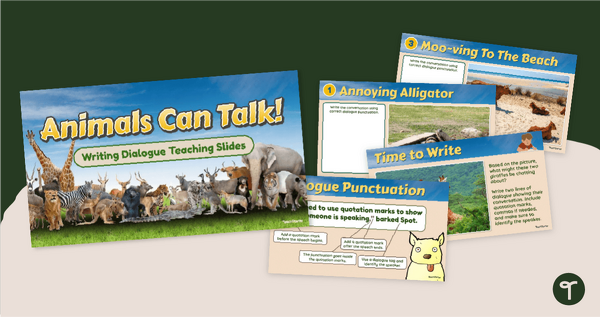
Talking Animals - Writing Dialogue Interactive Slide Deck
Practise writing dialogue and proving that 'Animals Can Talk!' with an exciting slide deck and digital learning activity.
- Plus Plan
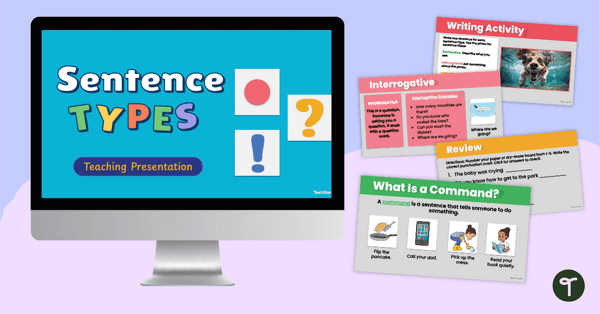
Statement, Question, Command & Exclamation Sentences PowerPoint
Introduce statement, command, question, and exclamation sentences with an interactive teaching slide deck.